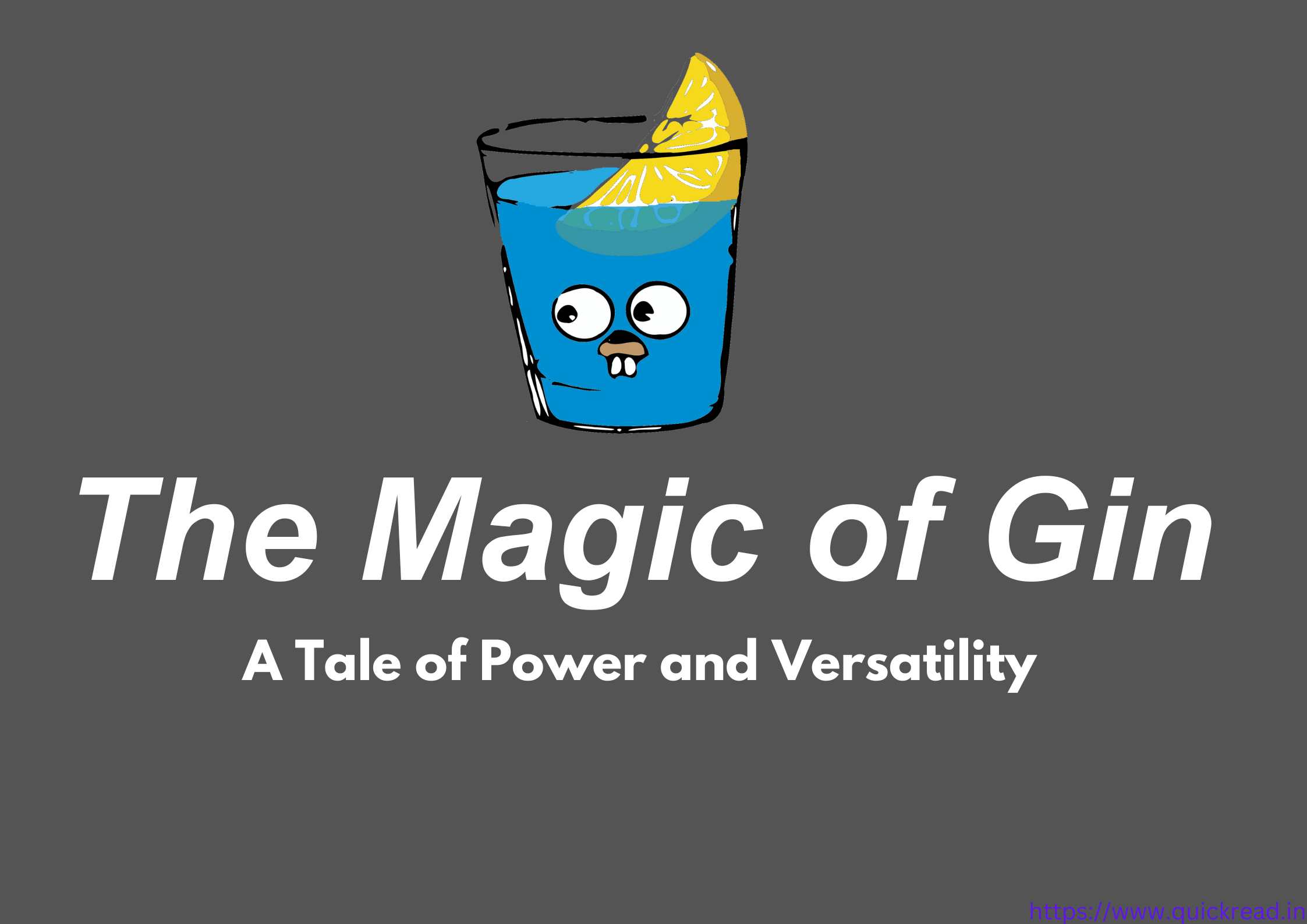Last updated on August 3rd, 2023
Introduction
In the world of web development, the keyword “Gin” holds a special place. It refers not to the alcoholic beverage but to a powerful and versatile web framework for the Go programming language. In this article, we will embark on an analytical journey to explore the wonders of Gin, its unique features, and the reasons why developers around the globe are enchanted by its capabilities.
What is Gin?
Gin: The Web Framework for Go
Gin is a robust web framework designed for the Go programming language. Its name might evoke images of a classic cocktail, but in the realm of web development, it’s a different kind of elixir—one that empowers developers to create powerful, fast, and efficient web applications with ease.
The Elixir of Performance
A Real-Life Scenario
Imagine you’re tasked with building a web application to handle a massive number of concurrent requests. The performance of your application is critical, and every millisecond matters. This is where Gin’s true magic lies.
With its lightning-fast routing and optimized design, Gin can handle an astounding number of requests per second. Its performance is akin to a well-crafted potion that unleashes the full power of the Go programming language.
Versatility in Action
A Developer’s Tale
Meet Sarah, an aspiring developer who seeks a web framework that offers both power and versatility. She ventures into the realm of Gin and quickly discovers its rich ecosystem of middleware and plugins.
With Gin’s middleware support, Sarah effortlessly integrates authentication, logging, and other essential functionalities into her web application. The vast library of plugins allows her to customize her project, tailoring it to her exact needs.
Growing Community and Support
Joining the Guild
In any web framework, a vibrant community is a sign of its strength and potential. Gin boasts a thriving community of developers who actively contribute to its growth and development.
Sarah becomes part of this community and finds a guild of like-minded developers, all eager to help each other succeed. The support she receives on forums and GitHub gives her the confidence to embark on even more ambitious web projects.
Seamlessly Integrating with Other Libraries
A Symphony of Tools
In the symphony of web development, Gin plays harmoniously with other Go libraries. Sarah discovers that Gin’s compatibility allows her to leverage the power of various packages while using Gin as the conductor of her web application.
This integration proves to be the key to unlocking endless possibilities, as Sarah combines the strength of Gin with the versatility of other Go libraries.
How to setup Gin?
Setting up Gin, the powerful web framework for Go, is a straightforward process. Follow these steps to get started:
- Install Go: Ensure you have Go installed on your system. If you haven’t installed it yet, download and install the latest version from the official Go website: https://golang.org/dl/
- Create a New Project: Start by creating a new directory for your Gin project. Open a terminal or command prompt, navigate to the desired location, and run the following command to create a new Go module:
go mod init <your_project_name>
Install Gin: With the project initialized, install Gin using the go get command:
go get -u github.com/gin-gonic/gin
Create the Main File: Inside your project directory, create a new file (e.g., main.go) and import the Gin package:
package main
import (
"github.com/gin-gonic/gin"
)
func main() {
// Your Gin application code goes here
}
Setting Up Routes: Now, start building your Gin application by defining routes and handlers. For example, to create a simple “Hello, World!” endpoint, add the following code inside the main function:
func main() {
router := gin.Default()
router.GET("/", func(c *gin.Context) {
c.String(200, "Hello, World!")
})
router.Run(":8080")
}
Run the Application: Save your changes and run the application using the go run command:
go run main.go
Your Gin application will now be running on http://localhost:8080/. You can access it using your web browser or tools like cURL or Postman.
Explore Further: With the basic setup complete, you can now start exploring more features of Gin, such as routing, middleware, and handling different types of requests. official documentation
Frequently Asked Questions
What are the key features of Gin?
Gin offers fast routing, middleware support, easy JSON handling, and efficient error management.
Is Gin beginner-friendly?
Yes, Gin’s simple syntax and clear documentation make it accessible to developers of all levels.
Can I build RESTful APIs with Gin?
Absolutely! Gin’s powerful routing engine makes it perfect for building RESTful APIs.
Does Gin have a large community?
Yes, Gin has a thriving community with active support on GitHub and various forums.
Is Gin suitable for microservices?
Yes, Gin’s lightweight design and performance make it an excellent choice for building microservices.
How does Gin compare to other web frameworks?
Gin’s focus on speed and performance sets it apart, making it a preferred choice for high-performance applications.
Can I use Gin with other Go libraries?
Yes, Gin seamlessly integrates with other Go libraries, allowing you to leverage additional functionality.
Conclusion
In the realm of web development, Gin stands tall as a powerful and versatile elixir—a web framework that marries performance and versatility in a unique blend. Its lightning-fast routing, rich ecosystem of middleware, and seamless compatibility with other Go libraries make it an irresistible choice for developers seeking to create high-performance and feature-rich web applications.
So, embrace the magic of Gin, and let its power fuel your web development adventures like never before. Cheers to a journey filled with robustness, versatility, and the joy of coding!


